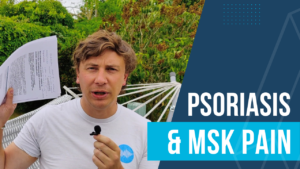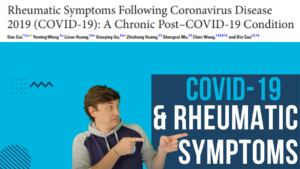Welcome back to the blog! After I researched for my Osteoarthritis EBook and wrote it, I have continued to think about Osteoarthritis and the questions that remain in my head about it. As such I have kept an eye out for interesting things and this blog details some of them and my thoughts about what they might mean.
The recurrent features are back with legend of the blog and music from Jimmy Eat World at the bottom of the page.
Please consider heading to the shop to find more resources and supporting me to continue this hairbrained project! Or you can Buy A Coffee
You can also listen to all of my blogs as podcasts subscribe to your preferred channel HERE You can also find my podcast on Apple & Spotify & Google
As usual feedback is greatly appreciated and any further reading for me please send it my way!
PLEASE REMEMBER – THIS BLOG IS NOT A REPLACEMENT FOR CLINICAL REASONING, IF YOU ARE UNSURE GET ADVICE
Legend of the Blog this week is Thomas Mitchell, an all around nice guy and always keen to help out if he can but also one of the best Hand/Wrist Therapists on the planet and his understanding of treatment methodology is just unbelievable. Check him out on twitter HERE
Booster Sessions
This is an interesting study for a variety of reasons. I haven’t had time to really delve into the detail yet but the crux of it was, they took patients and divided them into 4 arms. Exercise therapy delivered in consecutive sessions within 9 weeks (control group), exercise therapy distributed over 1 year using booster sessions, exercise therapy plus manual therapy delivered within 9 weeks, and exercise therapy plus manual therapy with booster sessions.
What they showed was the most cost-effective method was to use exercise therapy with booster sessions so instead of 12 sessions over 9 weeks they had 8 sessions in 9 weeks then “boosters” (2 at 5 months, 1 at 8 months and 1 at 11 months). They also showed adding MT to the 9 week program was better but not if they added it to the booster one which i find a little confusing.
I think what this shows is that giving the person time to go away with the option of returning provides potential benefits and I would discuss this option with people when you see them in clinic. Flexible approaches to appointment timeframes and/or class attendance is likely to be well received.
Bracing/Supports
I am a strange being and I was reading the NICE guidance on Osteoarthritis and supports/bracing are recommedned in there. This struck me, I dont recommend these as an option really for patients. It got me thinking, why don’t I and should I!
Embarking on a literature search which I will write in long form when I have had some time to go through it, the early indications seem that these can be an effective method of managing Osteoarthritis. I did a poll on twitter and the results seemed to concur that others didnt recommend them either but then when I asked why, people came out to say why they did which was a fun twitter juxtoposition.
Regardless, here are my thoughts as they stand on bracing/supports.
They are probably best used as second line treatments, lifestyle modification and exercise are first line. Bracing/supports are fitting into this later to enable participation or improve ability to exercise. They should be used at “minimal effective dose” and care should be taken around the narratives on how they might be helpful. Avoiding fragility concepts or reliance on the support/brace and describing them as soemthing that modifies symptoms in the short term to facilitate longer term goals. I hope to add more detail and clarity to this in the coming weeks as I munch my way through the research.
Describe Osteoarthritis in one tweet
Well this was interesting and if I am honest has generated more questions for me which I see as a successful thought experiment. You can read the thread here.
If you click on that link you will see that a number of people described it as “normal age related change”. Is it? Should wqe call it that? Does it matter? These are things I need to have a think about but my immediate reaction is that age is one factor in the development of Osteoarthritis both symptomatic and radiological so at best it seems to be an oversimplification.
Anywhere, here was my attempt at describing Osteoarthritis in one tweet:
Osteoarthritis is joint related dysfunction with an extremely complex interplay of causative factors ranging from ageing and obesity to joint injury and genetic susceptibility. There are some associated images changes but these do not appear to correlate with symptom severity.
What do you think, I really want to hear from you, where do you agree or disagree. Am I being overly pedantic. Please get in touch. More to come in the weeks ahead.
Check out the courses page for upcoming events or use the contact form to contact me if you would like your department to book me!
Music Choice: Jimmy Eat World – “Pain”
“Nevermind these are horrid times
Oh oh oh
I can’t let it bother me
It takes my pain
It takes my pain
It takes my pain away”


